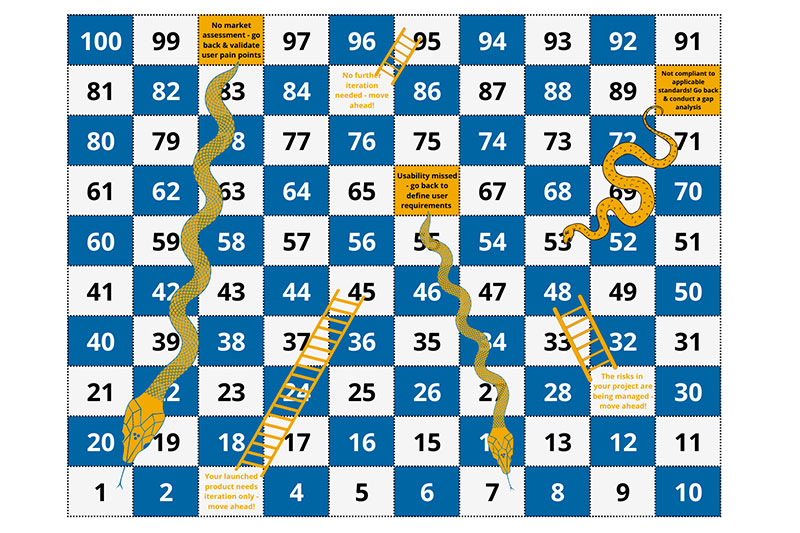Is product development a game of chance?
The best way to win a game of snakes and ladders is to get to the end square using the quickest possible route. A nice lofty ladder from the start to the end point is a good way to succeed, but getting there is somewhat beyond your control. Every roll of the dice dictates your route and it’s down to chance whether you climb straight to that winning square or go the long way round. The game of product development is less serendipitous.
As a product development consultancy, we often see people who have an incredible innovation but are so eager to get it on the market that they are hell-bent on taking that ladder straight to launch. However, this approach inevitably omits key programme requirements, landing them in a position that will likely snake them back to the start, to address the factors they have missed.
It is no surprise that many innovators try to rush through steps. Product development is no quick process, especially when it comes to medical devices (which can take between three to five years to develop). And without a defined development roadmap, which is only really achieved through frontline experience, it is understandable that many innovators look to partner with a development specialist.
At eg, we have spent years refining our development pathway and have learned along the way, which steps must be factored in and, more importantly, when. Nothing we do is down to chance. Everything is planned, scheduled, reported upon and managed carefully by our team of project managers. This may not be the preferred option for many, some may want to go it alone, but rolling a dice with product development won’t get you very far, as you will only have to return and address the elements you missed. Plan every step of your route to market and leave no stone unturned to avoid any potential snakes.

